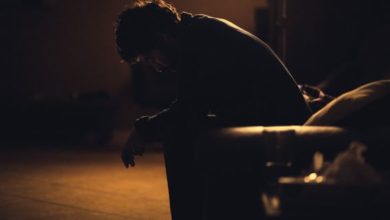Why Concrete Buildings Collapse and How SteinLaw Can Help


On June 24, 2021, the Champlain Towers condominium in Surfside, Florida, collapsed. Authorities are investigating the tragedy, but many are left wondering what could caused this collapse and if anything could have been done to prevent such a tragic event.
Surfside building collapse lawyer SteinLaw explains why buildings collapse and how a law firm, like SteinLaw, can help survivors and family members in the wake of tragedy.
Are Concrete Buildings Susceptible to Collapsing?
Concrete buildings are vulnerable to the same environmental and structural stresses as other types of buildings. Concrete is a mix of cement, water, and aggregate (sand, gravel, or stone). The key ingredient in concrete is cement paste which binds all materials together into a solid mass.
In general, strength depends on three factors:
- The proportions of ingredients used
- Type of aggregates used for fine particles (such as sand)
- Water content/slump% (the amount that droops before it starts to set up)
However, when these ratios are not precise from recipe engineering calculations, problems can arise, such as a lack of tensile strength in beams or laminations where they meet at an angle. This can lead to cracks and spalling, which are major factors in a concrete collapse.
Cracks that may form during pouring can propagate through the cement paste over time, causing it to weaken, leading to failure under stress conditions. As temperatures decrease, the chemical reaction slows down, and water content increases, resulting in a greater probability of shrinkage cracks and instability with expansion/contraction on freeze-thaw cycles. The likelihood of this happening often depends on how much moisture was used when mixing materials into the concrete slurry.
What Is the Problem With Concrete Buildings?
A concrete building may fail due to a lack of reinforcement which could result in it collapsing. It may also be possible that there was not enough reinforcing steel when the construction project was designed and built. However, engineers or inspectors must first notice something wrong before anyone can step up and say “something needs fixing.”
How Florida Laws Can Change To Help Maintain Concrete Buildings
Local Attorney, SteinLaw, has been strategically looking at how Florida laws can change to help maintain and improve the stability of concrete buildings. The first step is coming up with a clear definition of what constitutes defective concrete work so that there are no exceptions in the law. Rights-holders would be able to sue builders for damages incurred if they were negligent when pouring, finishing, or repairing cementitious materials such as mortar, grout, concretes, and mortars.
The second part of this process considers how owners should be notified about potential problems within their building’s structure before it collapses due to defective construction methods used by contractors or developers who fail to take proper steps during installation.
The third step is to make sure that there are strict penalties for anyone who knowingly provides defective concrete work and doesn’t notify the property owner so they can take corrective measures. Having such a strict penalty would reduce the chances of fatal collapses because owners would have a chance to correct the potential problem(s) before it’s too late.
Finally, a public education campaign must be created to identify signs of potential structural defects in buildings such as cracks or water leakage at joints, around windows and doors, and inside beams, floors or slabs.
Lack of Inspections
SteinLaw, a Miami condo collapse lawyer, discusses some of the weaknesses inherent in concrete buildings. Structural forces such as lack of reinforcement may lead to the building’s failure under specific conditions. At this point one knows why Surfside collapsed. There are only speculations.
However, many engineers and scientists now believe that Florida’s laws for inspecting concrete buildings are not sufficient. In Florida, concrete properties are only audited every 40 years – meanwhile, the Champlain Tower building was 40 years old when it collapsed.
Examples of Other Concrete Buildings That Have Spontaneously Collapsed
Though the Florida Building Code has been in place since 1974 and states that buildings older than 40 years should be inspected every five years – there are still laws that allow for buildings to go uninspected, if they have not had any structural damage or signs of wear-and-tear. This could result in property owners waiting until something needs to be fixed before making certain updates.
Surfside’s Champlain Towers was not the first concrete structure that has collapsed in Miami. In 1980, Sunshine Skyway Bridge collapsed and the very next year, Harbour Cay Condo collapsed during construction. Unfortunately, nor is a building collapse an event isolated to Florida. Other historical building collapses include:
- Skyline Towers in Manhattan, New York
- Hyatt Regency Hotel in Kansas City, Mo
- Hard Rock Hotel, New Orleans
- Skyline Plaza Apartment Building, Fairfax County, Virginia
How Attorneys Can Help
SteinLaw, a surfside condo collapse lawyer, can help survivors and their families recover damages from responsible parties. Taking all of the causes of concrete building collapse into consideration, a Surfside building collapse lawyer like SteinLaw can help get to the source of the problem and ensure that survivors and family members have everything they need.
Concrete buildings are often regarded as safe, but it is always possible that they will fail. Unsafe conditions, structural weaknesses, and poor inspection histories can all lead to tragedy. In the wake of the fatal collapse of the Champlain Towers, the hope is that this event will lead to better construction. In addition to inspection of existing buildings to help prevent additional and unnecessary loss of human life.


